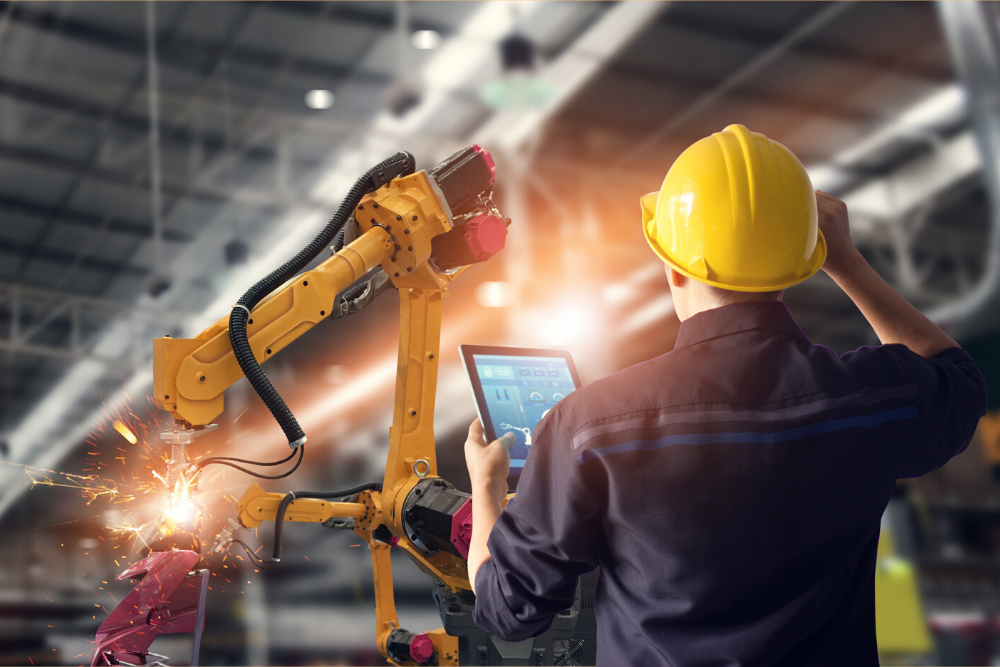As manufacturing facilities re-start around the world, it’s clear several efficient operating practices that are almost universally adopted will be somewhat reversed, certainly in the short-term, possibly longer.
Take ‘just-in-time’ or lean manufacturing for example; made famous by Toyota and popular since the 70’s, manufacturers will need to rethink their supply chains to reduce exposure to potentially disruptive events. As an opinion piece in the FT succinctly put it this weekend; more ‘just-in-case’ than ‘just-in-time’.
However, you cut it, on/near/re-shoring, combined with bigger parts and inventory buffers will need offsetting with some form of increased automation.
Increasing automation is fine if you’re a chip manufacturer (electronic or edible), where most tasks can be completed by machines. But a lot of discrete manufacturing relies on people – they’re just better at intricate, dexterous tasks (as Tesla found out to their cost at their car assembly plant).
So if you can’t easily automate the tasks themselves, what can you automate? Well, you can automate the location, flow and sequencing of those tasks. Here are three simple examples of manual tasks that remain surprisingly old-school.

Location
We often receive enquires asking us to help find things; “can you help reduce the time we waste searching for xyz?’. Sure. We put a tag on it and hey presto, no more time wasted. The more important question though is ‘why isn’t my xyz where it should be?’. Now we’re talking.
This is a big step in providing automated support to manual processes. Tracking your process (as well as your things) means always ensuring your tools, parts, people, products, equipment, vehicles, work-in-progress (etc…!) are where they should be. The invisible process waste of not properly locating and staging things in your process is significant – you just don’t know it until you get that visibility.
Interaction
Once you know where the things in your process are, you can monitor interactions between those things and control the way they interact. Automate your tools so they have the correct settings for the product they’re assembling without the need to manually configure. Know which product a person is inspecting to automate the completion of data for audit.
These simple automations save time (which in and of itself is valuable) but also reduce unwanted errors and re-work, a much bigger drag on efficiency.

Time
In busy manufacturing environments, it can be easy to overlook the obvious. Work-in progress sat in a process step for too long, materials kept out of cold storage and approaching the point of wastage, and parts replenishment overdue causing the risk or avoidable line stoppages.
As the manufacturing world gets largely upended – plants operating well below capacity, reduced reliance on lower-cost labour markets for manual intensive processes, disrupted demand – it’s time we tackle the hard yards; automating manual processes.
Only they really aren’t so hard. Organisations have been hunting out and fixing these inefficiencies for decades. Ask Ubisense – we’ll show you how manufacturers have been reliably solving these manual process challenges for years and we’re yet to find a process that can’t be made more efficient.

Written by Steven Manifold, Chief Marketing Officer at Ubisense
Steven Manifold is Chief Marketing Officer of Ubisense. Twenty years of marketing experience at both the bluest of blue chips and high growth SaaS companies has taught him that people value one thing; frictionless engagement with companies. If you want to know more about Ubisense, the markets we operate in or the challenges we can solve, just email him directly: [email protected]
